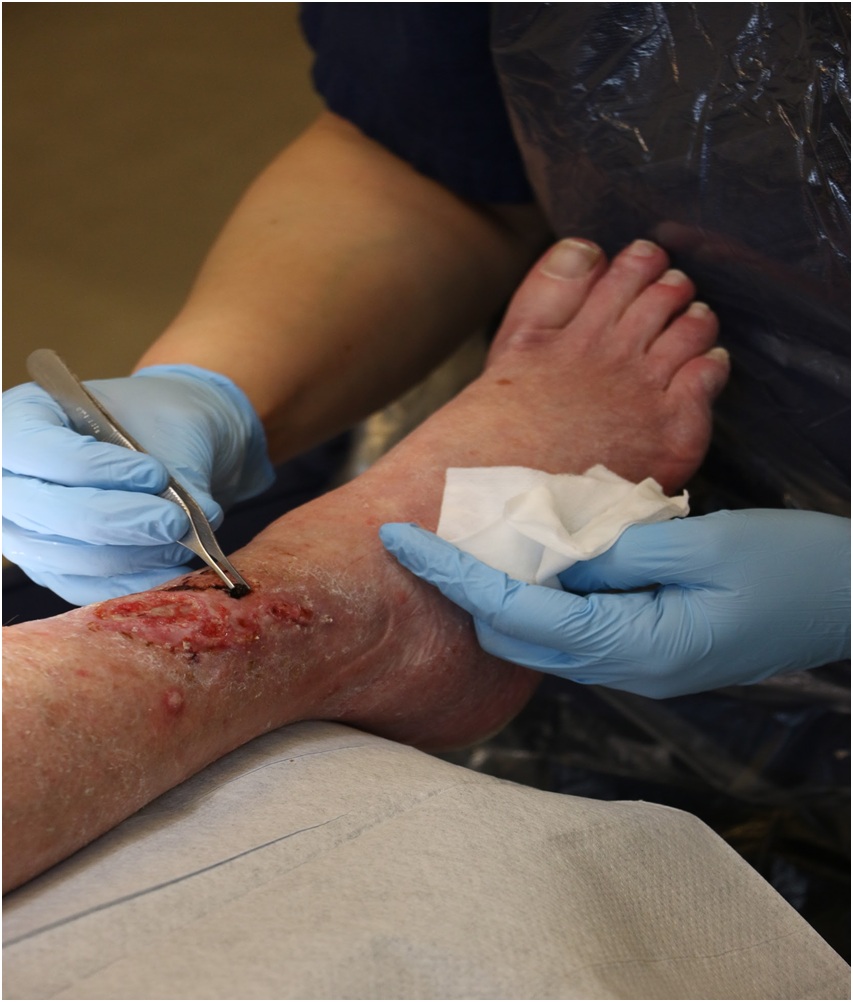
The treatment for leg ulcers is mainly by treating the underlying cause. As the chronic venous disease is the main cause of leg ulcers, this article will discuss the treatment of chronic venous disease. The treatments are:
- Compression therapy
- Painkillers (Leg ulcer pain relief medicine) is available online to make it easier for patients to purchase it)
- Venoactive medications like flavonoids
- Hydroxyethylrutoside medication
- Aspirin
- Emollients and suitable cleansing agent for affected skin
- Wound debridement and dressing
- Antibiotics
The fastest way to treat ulcers is to get treatment from a legit doctor. Every case responds differently to a treatment. Every single underlying disease that causes leg ulcers is treated differently. Untreated or severe leg ulcers may lead to amputation. Amputation is usually the last resort to this health issue. Leg ulcer means the destruction of the skin of the leg (epidermal layer or the outermost layer of the skin) that may extend into the inner layers of the skin (dermis and subcutaneous fat). In some cases, the ulcer might extend and affect other underlying tissue which means the extension is beyond the skin. 90% of leg ulcer cases are due to venous insufficiency, arterial insufficiency, and neuropathy. Venous insufficiency or also known as the chronic venous disease is the main cause for leg ulcers.
Leg ulcers are a serious health issue. The number of leg ulcer cases are increasing in trend. This condition is a global issue as it is a burden to the healthcare system, economy, and global productivity. Leg ulcers require multidisciplinary intervention in managing and treating these cases. Collaboration by the primary care team, plastic surgery team, vascular surgery team, wound care team, podiatrists, and dermatologists are needed in managing patients with leg ulcers. Leg ulcers are not a disease as they are clinical findings. Leg ulcers can be due to many diseases. Determining the real cause in a patient is crucial. Accurate diagnosis and identification of the underlying cause in a patient with leg ulcers will ensure the right treatments are given.
The risk factors for developing chronic venous disease are:
- Female
- Old age
- Pregnancy
- Obesity
- History of deep vein thrombosis
- Standing for a long time
Clinical features for the chronic venous disease are:
- Ulcer extending from middle half of the calf to ankle
- Usually, affect the skin on top of the inner ankle
- Shallow ulcers
- Ulcers with irregular borders
- Yellow discharge coming from the wound
- Moderate pain
- The present of varicose veins on the lower limbs
- Swelling of the legs
- Legs are brown
- Skin redness around the ulcer
- Scaly skin around the ulcer
- Skin induration
- Fibrosis of the leg
Arterial insufficiency or peripheral arterial disease is a condition where the blood flow to the limbs is affected. Patients with this disease usually have a history of heart attack or stroke. Blood flow is disrupted due to blockage by atherosclerosis (fat plaque). The risk factors for peripheral arterial disease are:
- Cigarette smoking
- Hypertension
- Diabetes
- Hyperlipidemia
The clinical features for the peripheral arterial disease are:
- Ulcers on toes, heels, ankle, and shin
- Severe pain
- Ulcers appear as punched-out lesions
- Pain at rest
- Claudication
- Shiny skin with loss of hair on the affected area
- Absent of pulses
Neuropathic ulcers are mostly caused by diabetic neuropathy (diabetes mellitus that affects the nerves). Diabetic patients have a 25% risk of developing leg ulcers. Other causes of neuropathic ulcers are alcohol abuse, spina bifida, spinal cord diseases, nutritional deficiencies, and autoimmune diseases.
Other less common causes of leg ulcers are:
- Infection
- Physical injury
- Blood vessels disorders
- Sickle cell disease
- Pyoderma gangrenosum
- Cancer
- Medications like warfarin and heparin
- A spider bite (Brown recluse spider)



